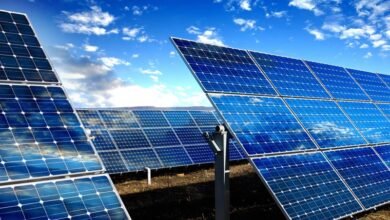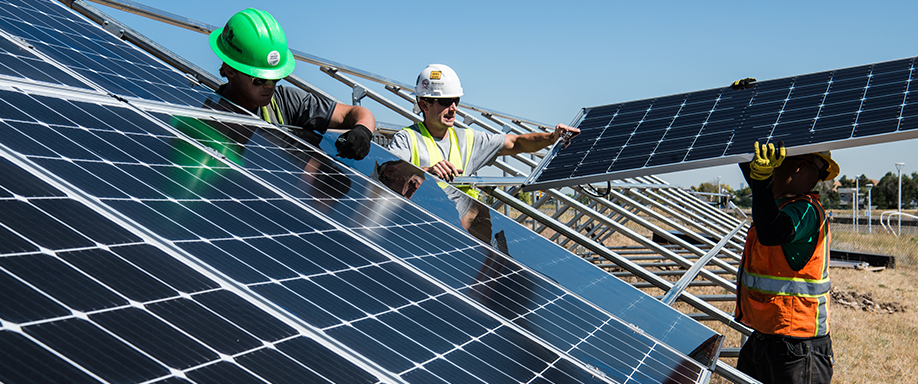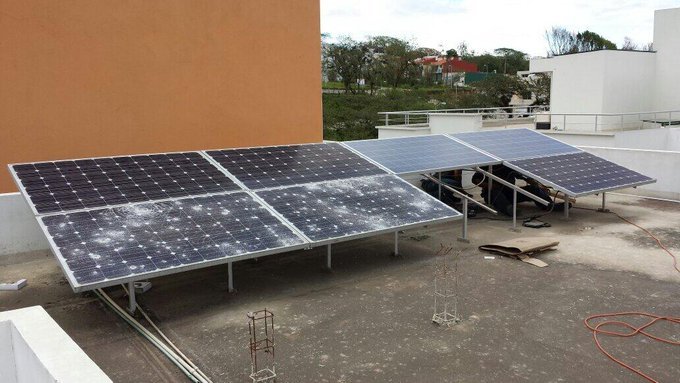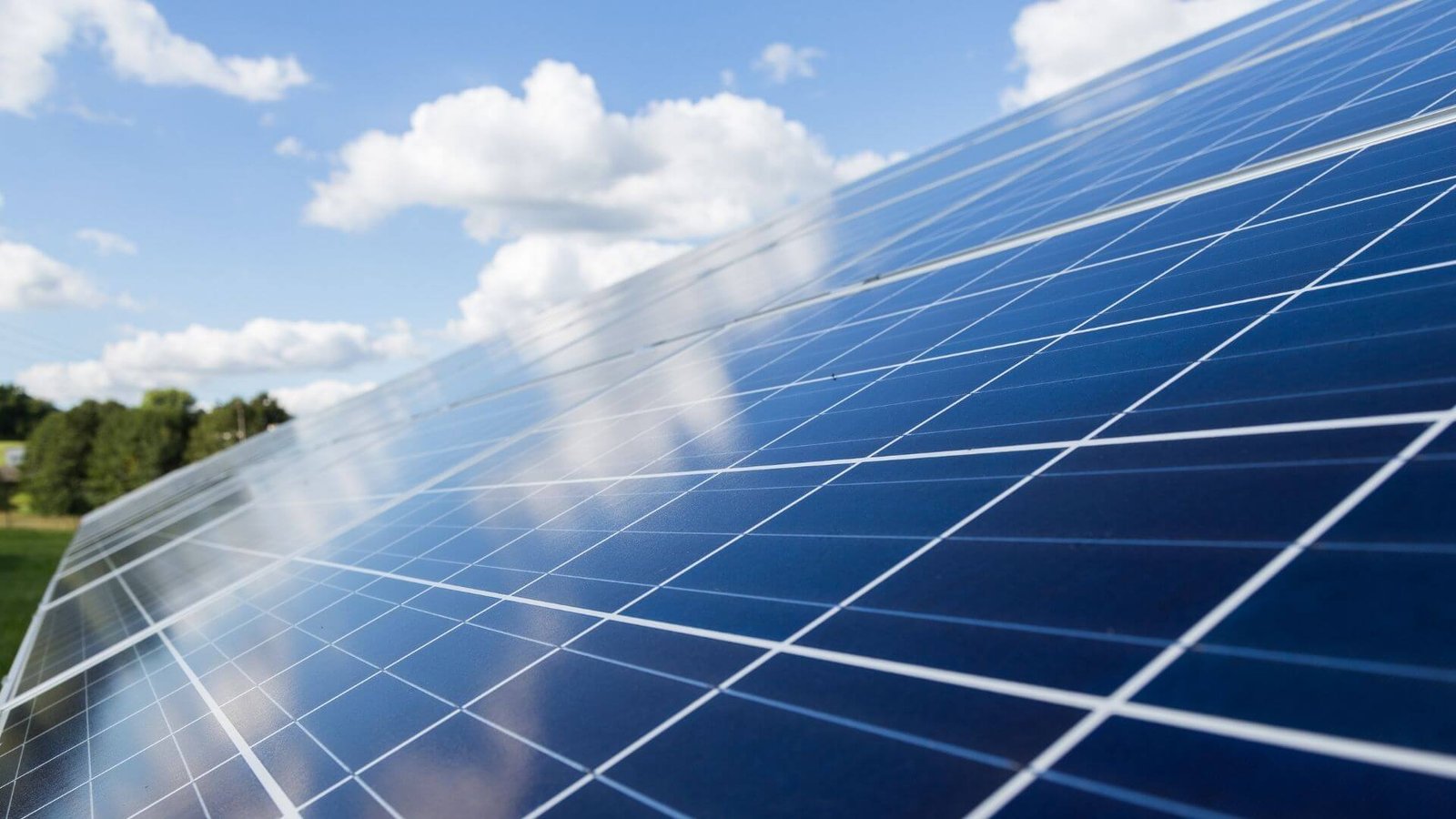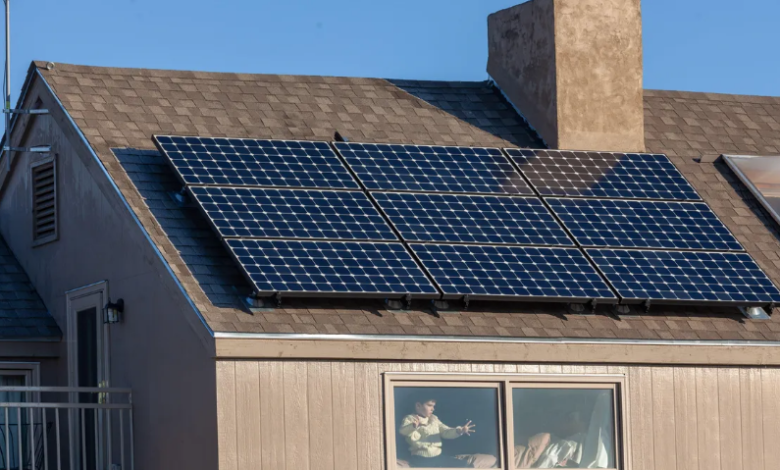
Solar Panel Dimensions and Sizes – Airis Energy Solutions
Solar panels, also known as photovoltaic (PV) panels, are devices that convert sunlight into electricity. They are an eco-friendly and renewable energy source, making them an increasingly popular choice for generating electricity for residential, commercial, and industrial applications. Solar panels are a crucial component of solar power systems, which help reduce reliance on fossil fuels and contribute to a more sustainable future.
Here’s an introduction to the dimensions of solar panels:
- Typical Sizes: Solar panels come in various sizes, but the most common dimensions for residential installations are around 65 inches by 39 inches (165 cm by 99 cm). However, the dimensions can vary depending on the manufacturer and the panel’s wattage.
- Wattage and Efficiency: The wattage of a solar panel indicates its power-generating capacity. The higher the wattage, the more electricity it can produce. Efficiency is another essential factor, representing the panel’s ability to convert sunlight into electricity. High-efficiency panels can generate more electricity within the same surface area.
- Standard Solar Panel Types: The two primary types of solar panels are monocrystalline and polycrystalline. Monocrystalline panels are generally more efficient but can be more expensive, while polycrystalline panels are more affordable but slightly less efficient.
- Installation Considerations: When installing solar panels on a rooftop or in a solar farm, the available space and orientation play a crucial role. Panels are usually installed at an angle facing the equator to maximize sunlight exposure.
- Weight: Solar panels are relatively lightweight, typically weighing around 40 to 50 pounds (18 to 23 kilograms) each. This makes them easy to handle and install.
- Customization: In some cases, solar panels can be custom-made to fit specific requirements, especially for unique or challenging installation locations.
- Flexible and BIPV Panels: Some solar panels are flexible and can be installed on curved surfaces. Building-Integrated Photovoltaic (BIPV) panels are designed to blend in with the architecture, making them aesthetically pleasing for certain installations.
- Advancements: Over the years, solar technology has seen advancements, including higher efficiency and improved manufacturing processes, leading to smaller and more powerful solar panels.
- Solar Panel Arrays: In practice, solar panels are often installed in arrays, consisting of multiple panels connected together to form a solar power system. The number of panels in an array depends on the energy needs and available space.
- Maintenance: Solar panels generally require minimal maintenance. Periodic cleaning and monitoring are recommended to ensure optimal performance.
When considering installing solar panels, it’s essential to assess your energy needs, available space, budget, and the efficiency and warranty of the panels. Consulting with a solar energy expert can help you make the best decision for your specific circumstances.
Standard Solar Panel Size
As of my last update in September 2021, the standard solar panel size for residential and commercial installations is typically around 65 inches by 39 inches (165 cm by 99 cm). This size is commonly referred to as a “60-cell” or “6×10” configuration.
Please note that solar panel sizes can vary depending on the manufacturer and the specific model. Over time, there may have been developments in solar panel technology that could lead to changes in standard sizes. For the most up-to-date information, I recommend checking with solar panel manufacturers or industry publications for the latest specifications.
Solar Panel Dimensions of the Three Common Types of Panels
As of my last update in September 2021, there are three common types of solar panels available: monocrystalline, polycrystalline (also known as multicrystalline), and thin-film solar panels. Each type has different dimensions and efficiency levels. Keep in mind that solar panel technology may have evolved since then, so I recommend checking with specific manufacturers for the most up-to-date information. However, here are the typical dimensions for the three common types:
- Monocrystalline Solar Panels:
- Dimensions: Approximately 65 inches x 39 inches (165 cm x 99 cm)
- Efficiency: Around 15% to 20%
- Polycrystalline (Multicrystalline) Solar Panels:
- Dimensions: Approximately 65 inches x 39 inches (165 cm x 99 cm)
- Efficiency: Typically around 13% to 16%
- Thin-Film Solar Panels:
- Dimensions: These panels vary widely in size, as they can be made in flexible and custom shapes.
- Efficiency: Generally lower than monocrystalline and polycrystalline panels, around 10% or lower.
Keep in mind that the efficiency and dimensions of solar panels can vary based on the manufacturer, the technology used, and advancements in the industry. For specific and up-to-date information, it’s always best to check with solar panel manufacturers or suppliers.
Solar Panel Size Chart
As an AI language model, I don’t have real-time access to external data, so I can’t provide you with an up-to-date solar panel size chart for the current year. However, I can give you a general idea of common solar panel sizes that were available up until my last update in September 2021.
Solar panels come in various sizes, typically measured in watts or kilowatts peak (kWp), which refers to the amount of power they can generate under standard test conditions. The most common residential and commercial solar panels have wattages ranging from around 250 watts to 400 watts per panel.
Keep in mind that solar panel technology advances rapidly, and larger and more efficient panels might be available beyond my knowledge cutoff date. To get the most current and accurate information, I recommend checking with reputable solar panel manufacturers or industry websites for the latest products and specifications.
Please note that solar panel size isn’t the only consideration when designing a solar system. Other factors, such as the efficiency of the panels, the available roof or ground space, and local climate conditions, also play a significant role in determining the overall effectiveness of a solar installation. It is advisable to consult with a solar professional or installer to assess your specific needs and design the best system for your situation.
Solar Power Calculation Formula
The calculation of solar power involves several factors, including the amount of sunlight received, the efficiency of the solar panels, and the area of the solar panels. The basic formula to calculate solar power generation is as follows:
Solar Power (in watts) = Solar Irradiance (in watts per square meter) x Area of Solar Panels (in square meters) x Efficiency
- Solar Irradiance: Solar irradiance is the amount of solar energy received per unit area. It varies depending on the location, time of day, and weather conditions. The typical unit of measurement is watts per square meter (W/m²). You can obtain solar irradiance data for your location from various sources, such as solar maps or weather services.
- Area of Solar Panels: This refers to the total area of the solar panels that are exposed to sunlight. It is measured in square meters (m²). If you know the dimensions of your solar panels (length and width), you can multiply these two values to get the total area.
- Efficiency: Efficiency represents the conversion efficiency of the solar panels. It indicates how much of the solar energy received is converted into electricity. The efficiency is usually expressed as a percentage, and typical values range from 15% to 25% for most commercial solar panels.
Putting it all together, the formula can be written as:
Solar Power (in watts) = Solar Irradiance (in W/m²) x Area of Solar Panels (in m²) x Efficiency (as a decimal)
Keep in mind that the actual solar power output may vary throughout the day due to changes in sunlight intensity, cloud cover, and the angle of the sun. Additionally, shading, dirt, and other factors can impact the overall efficiency of the solar panels. Professional solar installers often consider these variables to provide more accurate predictions of the system’s energy production.
Factors that Affect Solar Panel Output
The output of solar panels, also known as their electricity generation or energy yield, can be influenced by various factors. Understanding these factors is crucial for optimizing the efficiency and performance of solar photovoltaic (PV) systems. Some of the key factors that affect solar panel output include:
Sunlight Intensity: The amount of sunlight hitting the solar panels directly affects their output. Solar panels generate more electricity when exposed to higher levels of sunlight. Therefore, locations with higher solar irradiance will typically produce more electricity from solar panels.
Solar Panel Angle and Orientation: The angle and orientation of solar panels in relation to the sun can significantly impact their efficiency. The ideal orientation depends on the geographic location. For example, in the Northern Hemisphere, south-facing panels receive the most sunlight throughout the day.
Temperature: Solar panels can become less efficient as they get hotter. High temperatures can cause a decrease in electricity production. Manufacturers often provide temperature coefficient ratings to indicate how the panel’s output is affected by temperature changes.
Shading: Shading is one of the most critical factors affecting solar panel output. Even partial shading of a solar panel can lead to a significant reduction in its performance. It is essential to avoid shadows from nearby objects like trees, buildings, or other obstructions.
Panel Age and Degradation: Over time, solar panels can experience performance degradation. This degradation is typically gradual and depends on the specific panel technology and quality. Higher-quality panels tend to degrade at a slower rate.
Dust and Dirt: Accumulation of dust, dirt, or other debris on the surface of solar panels can reduce their efficiency by blocking sunlight. Regular cleaning and maintenance are necessary to ensure optimal performance.
Inverter Efficiency: Solar inverters convert the direct current (DC) produced by solar panels into alternating current (AC) for use in households and businesses. The efficiency of the inverter can impact the overall system efficiency.
Geographic Location: The location of the solar panels plays a significant role in their performance. Different regions have varying levels of solar irradiance and weather conditions that can affect the output.
System Design and Components: The design and quality of the overall solar PV system, including the type of panels, wiring, mounting structures, and inverters, can influence the overall efficiency.
Tilt Angle: The tilt angle of the solar panels affects their exposure to sunlight throughout the day and across different seasons.
Incidence Angle: The angle at which sunlight strikes the solar panels can also impact their efficiency. Ideally, sunlight should hit the panels perpendicular to maximize energy production.
Reflection and Albedo: The surroundings of the solar panels can affect their output. For instance, surfaces with high reflectivity (albedo), like snow or water bodies, can enhance the amount of sunlight reaching the panels.
By considering these factors during the design, installation, and maintenance of solar PV systems, it is possible to optimize their performance and ensure maximum electricity generation from renewable solar energy.
Discover the Best Solar Panels Dimensions for Maximum ROI
The dimensions of solar panels are generally standardized based on the type and model of the panel. The two most common types of solar panels are monocrystalline and polycrystalline, and their dimensions are as follows:
- Monocrystalline Solar Panels:
- Typical dimensions: 39 inches x 65 inches (99 cm x 165 cm)
- Power output: Varies depending on the wattage rating of the panel (e.g., 300W, 350W, etc.)
- Polycrystalline Solar Panels:
- Typical dimensions: 39 inches x 65 inches (99 cm x 165 cm)
- Power output: Varies depending on the wattage rating of the panel (e.g., 280W, 320W, etc.)
When considering solar panels for maximum return on investment (ROI), several factors come into play:
- Efficiency: Look for solar panels with higher efficiency ratings. More efficient panels can generate more electricity in the same amount of space, which can lead to a higher ROI.
- Warranty: Ensure the solar panels have a good warranty. Longer warranties are generally better, as they provide peace of mind and can protect your investment for a more extended period.
- Energy Needs: Assess your energy consumption and requirements. Consider the amount of energy your household or business consumes daily to determine the number of solar panels you need to install.
- Location and Sunlight: The location of your solar panel installation will significantly impact the ROI. Regions with more sunlight will generate more electricity, leading to a faster ROI.
- Installation Costs: Factor in the installation costs when calculating your ROI. Obtain quotes from reputable solar installers in your area and consider the total costs involved.
- Incentives and Rebates: Check for any local or federal incentives, tax credits, or rebates for solar panel installations. These incentives can significantly improve your ROI.
- Financing Options: Consider financing options such as solar loans or leasing agreements. Sometimes, these options can make solar more affordable and improve your ROI.
- Brand Reputation: Choose reputable and established solar panel brands known for their quality and longevity. A well-known brand with a good track record may provide better ROI in the long run.
- Maintenance Costs: Evaluate the maintenance costs associated with the solar panels. Higher-quality panels may require less maintenance and repair, contributing to a better ROI.
Always consult with a professional solar installer or energy expert to analyze your specific situation and provide personalized recommendations for maximum ROI. Each individual or business’s circumstances may vary, and a tailored approach is essential to make the best decision.
Solar Panel FAQs
What is the typical size of a solar panel?
As of my last update in September 2021, the typical size of a standard residential solar panel is approximately 65 inches (5.4 feet) in height and 39 inches (3.25 feet) in width. This is the standard size for a 60-cell solar panel, which is one of the most common types used in residential installations.
Commercial and utility-scale solar panels can vary in size, and there are larger panels with more cells that can be used in larger installations. However, for residential applications, the 60-cell panel dimensions mentioned above are most commonly used.
It’s worth noting that solar panel technology and designs may have evolved since my last update, so it’s always a good idea to check with manufacturers or solar installation companies for the most up-to-date information on solar panel sizes.
How much do solar panels weigh?
The weight of solar panels can vary depending on the type, size, and materials used. Generally, the weight of a standard residential solar panel ranges from around 33 to 55 pounds (15 to 25 kilograms). These panels are typically around 65 inches by 39 inches in size.
For larger commercial or utility-scale solar panels, the weight can be higher. These panels may range from 45 to 75 pounds (20 to 34 kilograms) or more.
Keep in mind that as technology and materials advance, solar panels may become more efficient and lighter. It’s always a good idea to check the specifications of a specific solar panel model to get the most accurate weight information.
The size of individual solar cells can vary depending on the specific type and application. However, traditional silicon solar cells, which are the most common type used in photovoltaic panels, are typically square or rectangular in shape and can have dimensions ranging from a few centimeters to about 15 centimeters (approximately 1 inch to 6 inches) on each side.
The most common silicon solar cell size for residential and commercial solar panels is around 156.75 mm x 156.75 mm (approximately 6 inches x 6 inches). These cells are also known as “156 mm” or “6-inch cells.” They are assembled together to form solar panels that are mounted on rooftops or in solar farms to generate electricity from sunlight.
It’s worth noting that there are other types of solar cells that can have different sizes. For instance, thin-film solar cells are typically larger and can cover larger areas, but they are less efficient than traditional silicon cells. Additionally, research is ongoing in the field of solar technology, so there may be new developments in cell sizes beyond my knowledge cutoff in September 2021.
Read more: Dimensions of photovoltaic panels


